Hot weather: Rail services disrupted on UK's hottest day
- Published

A departure board at Waterloo station showed the disruption caused by the hot weather
Commuters faced delays as soaring temperatures affected train services on the hottest day of the year so far.
The highest UK temperature was 33.5C (92F) in Oxfordshire, while it reached 32.4C in Wales and 29C in Scotland.
Heat buckled a rail in North Yorkshire, and speed limits were put in place on some lines due to "high rail temperatures".
In Burton-on-Trent, Staffs, on Monday, a 46-year-old man died after reportedly jumping into a canal to "cool off".
A yellow warning of rain is in place from Tuesday evening onwards covering most of the UK, external apart from south Wales and southern England. The Met Office has also warned of the risk of flash flooding.
Track temperatures
Some rail companies announced train speeds had been reduced, because of fears of hot rails buckling.
Great Western Railway, external made a series of changes to timetabled services as track temperatures threatened to exceed 50C in parts of London.
The train operator warned many of its services would take 10-15 minutes longer because of the hot conditions.
Jon Kay helps apply sunscreen to a pig
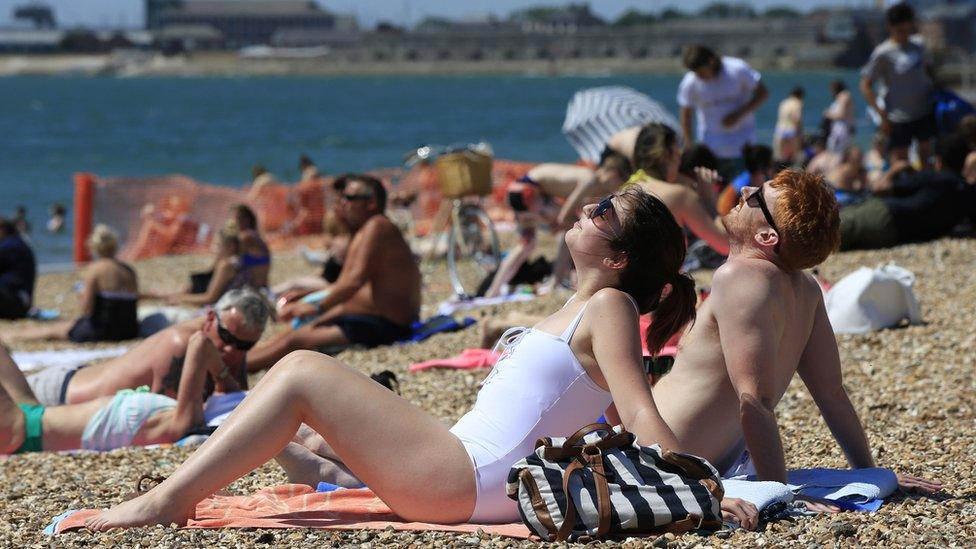
Crowds basked on Southsea beach in Portsmouth
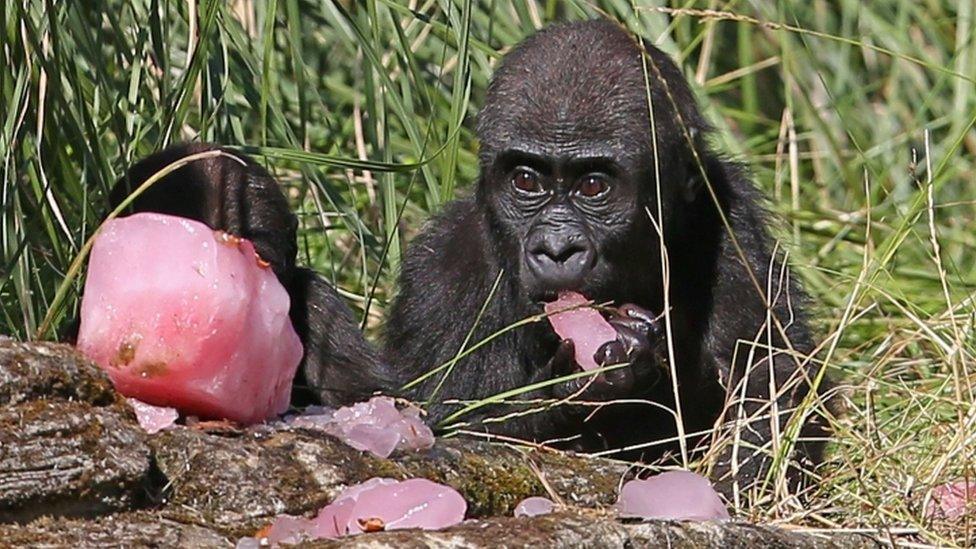
Gorillas were given a fruit ice block with hazelnuts at London Zoo, to help cool off
The high summer temperatures were blamed for delays on First Transpennine Express, external, Northern and Hull Trains services.
A rail buckled in the heat at Selby, North Yorkshire, and trains were delayed by up to 60 minutes.
The Met Office said at about 16:15 BST that 33.5C had been recorded at RAF Brize Norton in Oxfordshire.
It became the hottest day of the year so far in the UK at about 11:30 BST, when 30.2C was recorded in London's St James' Park, and 30.1C was recorded at Charlwood in Surrey, Heathrow and Northolt in Greater London.
On Twitter, #hottestdayoftheyear trended throughout the day.
The highest reading recorded in the UK in July was 36.7C (98F) in 2015.
Though many described Tuesday's conditions as a heatwave, the Met Office said it uses the World Meteorological Organization definition - that the daily maximum temperature exceeds the average maximum temperature by 5C for five consecutive days.
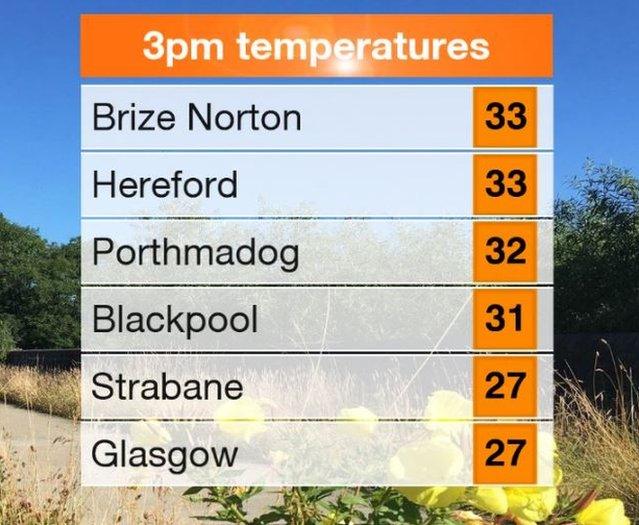
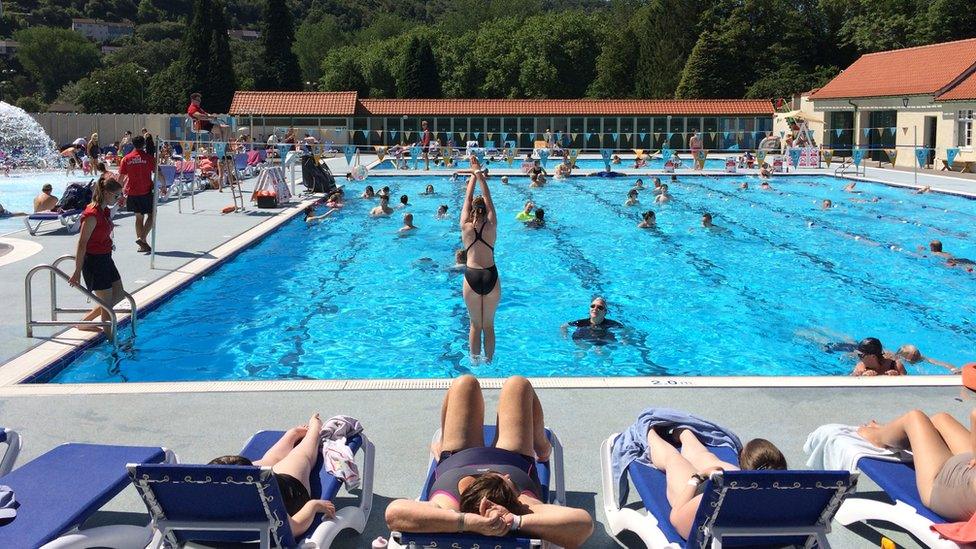
Swimmers took advantage of the weather at the lido in Pontypridd in Wales
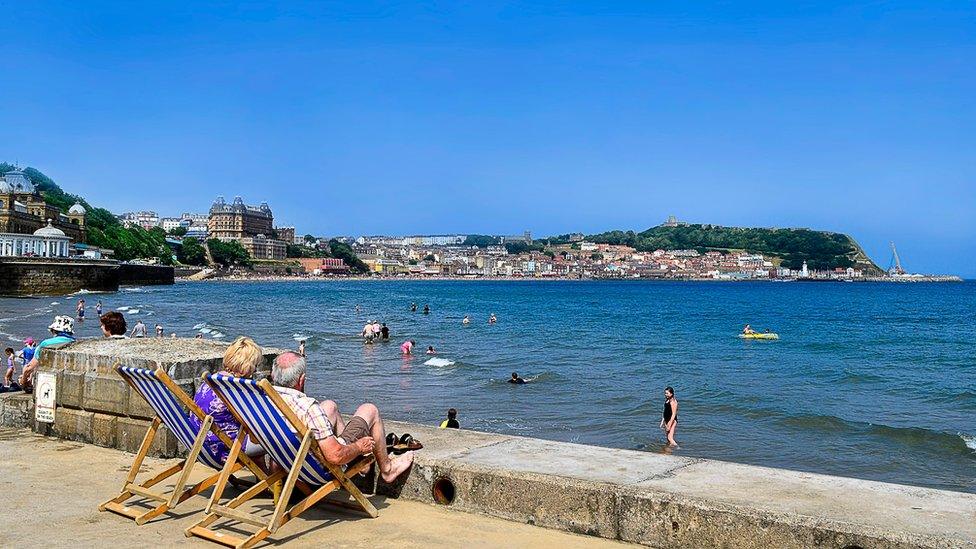
BBC Weather Watchers have been sending pictures in from around the country, including this of blue skies over Scarborough
However, it declared a level three heatwave alert, meaning there was a 90% probability of heatwave conditions until Thursday morning.
London Ambulance Service said it had received 300 more calls than usual on Tuesday and Public Health England urged people to take care, with advice to drink plenty of water, and wear sunscreen and loose clothing., external
St John Ambulance also issued advice, urging people to be aware of headaches, dizziness and cramp, which can be signs of heat exhaustion and heat stroke., external
Dr Angie Bone of Public Health England offers some tips and dispels some myths on staying cool
The RSPCA said it had also seen a spike in calls from members of the public concerned about dogs left in hot cars, conservatories, sheds and caravans.
The hottest temperature ever recorded in the UK was 38.5C (101.3F) in Faversham, Kent, in August 2003.
Possible thunderstorms
BBC Weather's Carol Kirkwood warned the high temperatures could spark isolated thunderstorms in Northern Ireland on Tuesday evening, which would travel across north and west Wales, northern England and Scotland through the evening and overnight.
"Some of those could be torrential; we'll see a lot of rain in a short amount of time, lots of lightning flashes and big hail and gusty winds. It's going to be a humid night as well," she said.
A farmer in West Sussex captured his hay spinning in a "dust devil", which can occur when there is warm air and a slight breeze.
Meanwhile, in the House of Commons, MPs proposed employers should be legally forced to provide water, breaks or air conditioning to combat "uncomfortably high" temperatures.
There is no law for minimum or maximum working temperatures, but guidance suggests a minimum of 16C (61F), or 13C, if employees are doing physical work.
There is currently no guidance for maximum working temperature, but an early day motion tabled in the House of Commons called for a legal limit of 30C or 27C for those doing strenuous work.

The Riverside Museum provided a makeshift beach in Glasgow

A ring tailed lemur cooled off with a frozen fruit treat in its enclosure at Blair Drummond Safari Park near Stirling
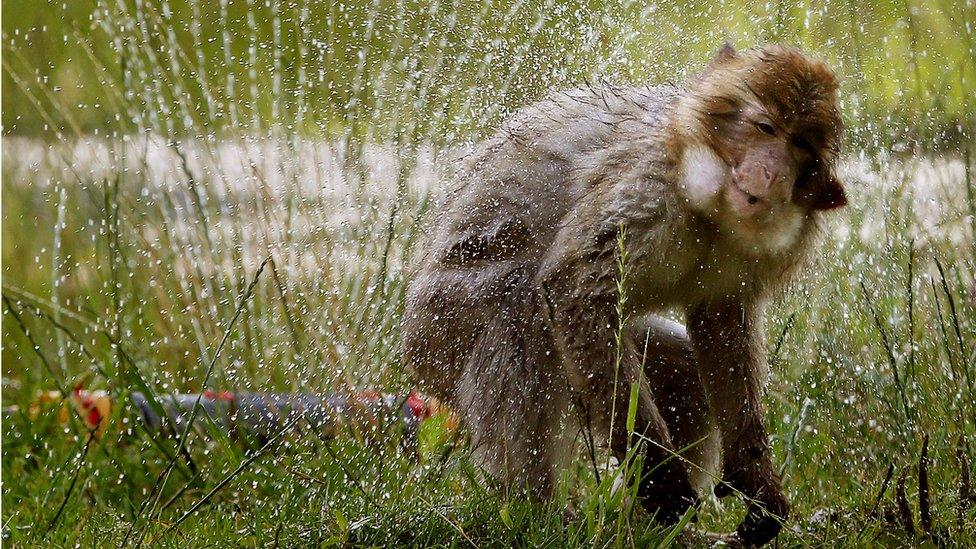
A Barbary macaque enjoyed a cool shower at Blair Drummond Safari Park
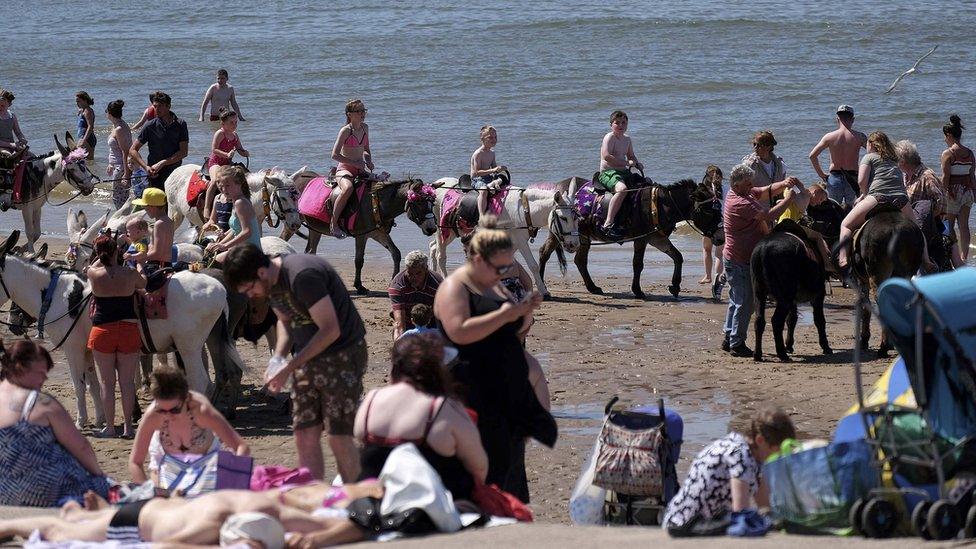
Children enjoyed a ride on donkeys on Blackpool beach
- Published18 July 2016
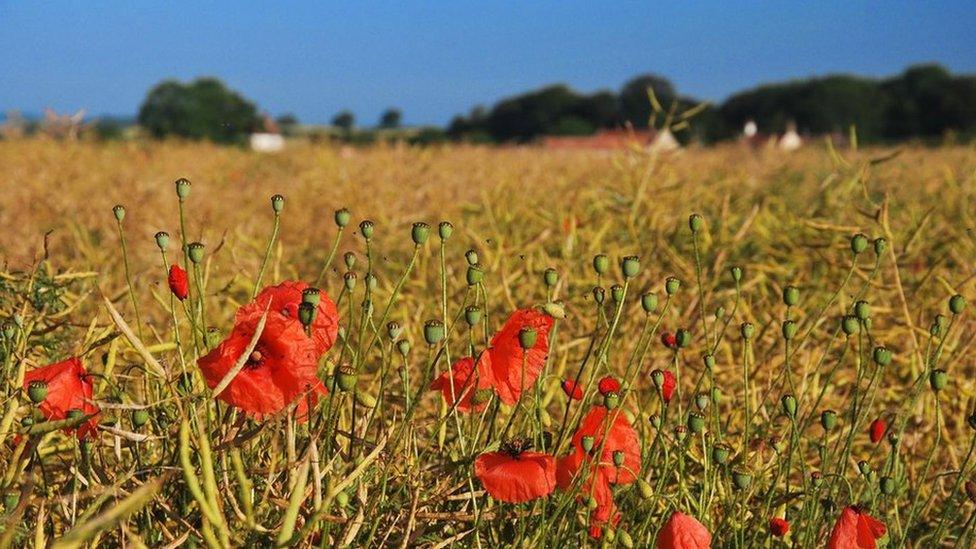
- Published19 July 2016
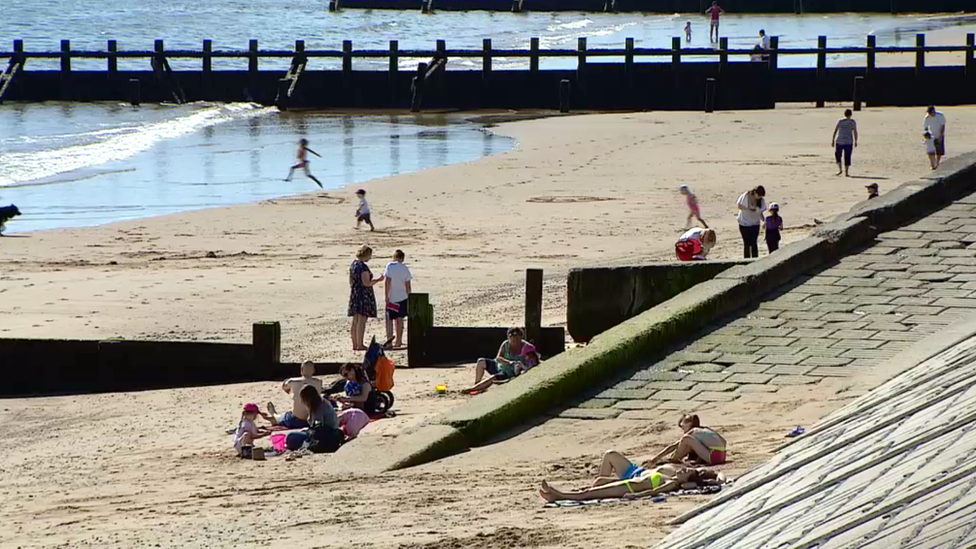
- Published16 June 2022

- Published19 July 2016
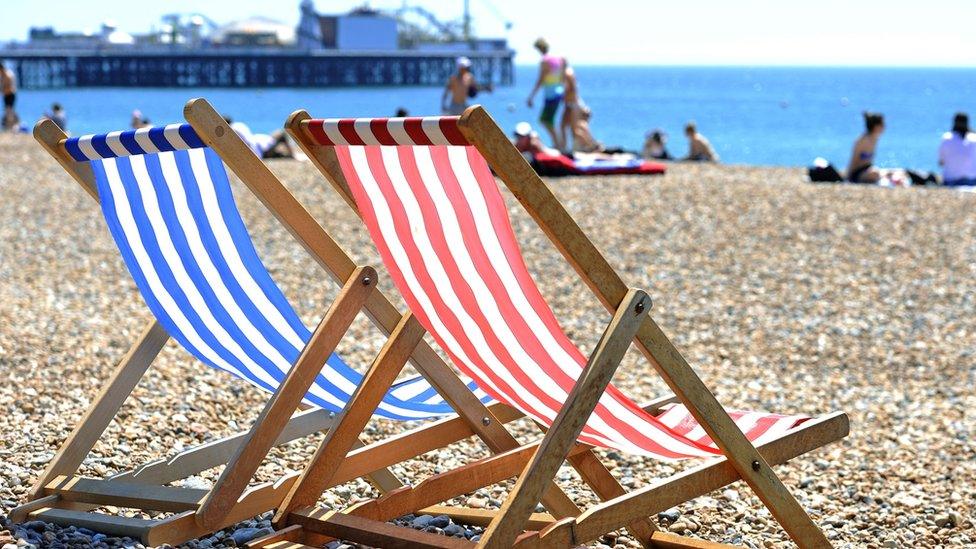
- Published1 July 2015
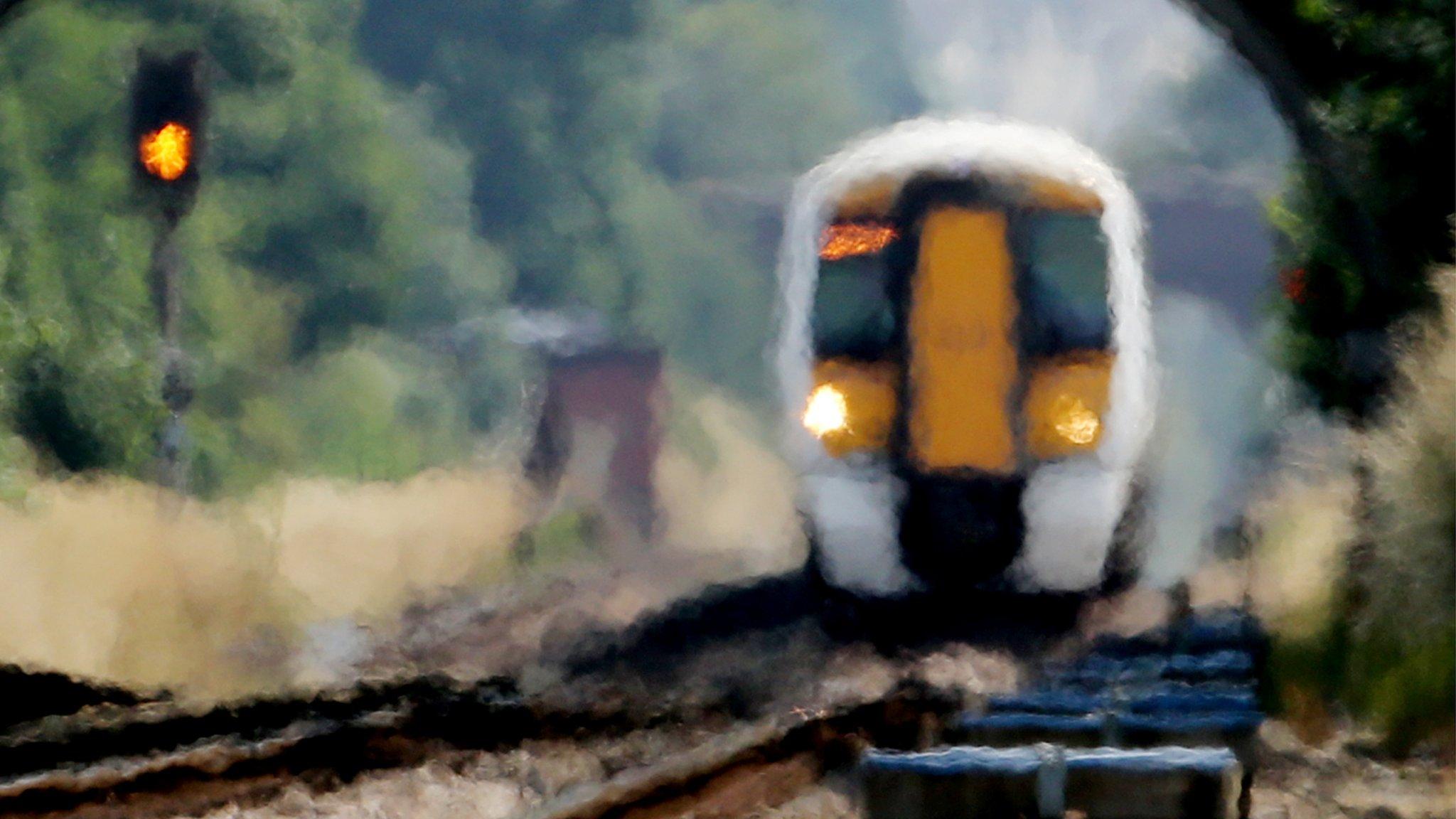
- Published1 July 2015

- Published1 July 2015
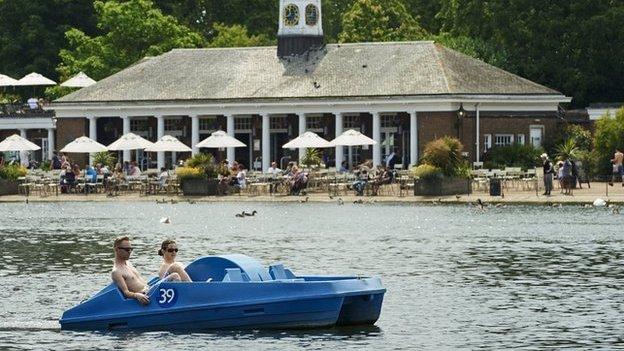
- Published20 August 2012
